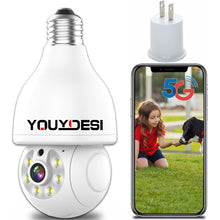- Bullet cameras, when used in conjunction with lenses, may necessitate additional lightning protection, especially for outdoor cameras. Lightning protection for both signal and power sources is a must, even more so when dealing with light bulb cameras, wireless cameras, and security cameras.
2. Transmission Cables:
- This includes both network cables and power cables. If Power over Ethernet (PoE) is used, you can employ standard Ethernet cables. However, it's crucial to maintain the transmission distance within 75 meters.
3. Switches:
- To connect all cameras within approximately 90 meters, you can directly link them to switches. If the distance exceeds 90 meters, you can utilize a network patch cable in conjunction with optical transceivers and optical fiber for switch connectivity. Opt for a switch with an adequate number of ports based on the quantity of front-end cameras. Typically, you should ensure the switch's upload bandwidth has a 45% redundancy. For instance, if you have 1000 Mbps Ethernet ports, you can accommodate more cameras.
- Bandwidth for cascading ports: To calculate the required bandwidth for cascading ports, use the formula IPCAM's bit rate * quantity. If the combined bit rate of your IPCAMs surpasses 60 Mbps, it's advisable to implement a 1000 Mbps cascading port. For example, if you have eight cameras, each with an 8 Mbps bit rate, you'd need a minimum bandwidth of 8 Mbps * 8 = 64 Mbps, making a 1000 Mbps cascading port the optimal choice.
4. Optical Transmission Accessories:
- This category encompasses optical modules, optical cables, optical patch cables, tail fibers, compatible interface couplers (such as SC-LC, LC-LC, etc.), optical fiber distribution racks, or cabinets.
5. Core Switches:
- The selection of a core switch should be based on the input switches and the total required bandwidth for camera data exchange. The packet forwarding rate and backplane bandwidth can be calculated as follows.
- Packet Forwarding Rate: A 100 Mbps port has a packet forwarding rate of 0.1488 Mpps/s, with this rate scaling for 1 Gbps and 10 Gbps ports. The packet forwarding rate for a single camera is approximately 2.6 Kbps, comfortably exceeding the requirements.
- Backplane Bandwidth = Number of Ports * Port Speed * 2. For instance, a 24-port 100 Mbps core switch (including two 1000 Mbps ports) boasts a bandwidth of (24 * 100 * 2 + 2 * 1000 * 2) / 1000 = 8.8 Gbps.
- Packet Exchange Rate = Number of Ports * Port Speed / 1000 * 1.488 Mpps. Consider a 24-port 100 Mbps core switch, which has a packet exchange rate of 24 * 100 / 1000 * 1.488 = 3.60 Mpps/s. Occasionally, certain switches might not meet this requirement, resulting in non-line-speed switches and potential latency during high-capacity data processing.
6. Storage Devices:
- Your choice between hard disk recorders and centralized storage devices should align with the number of camera channels required.
7. Decoders:
- Opt for a decoder with a suitable number of channels according to the number of display monitors you intend to use.










